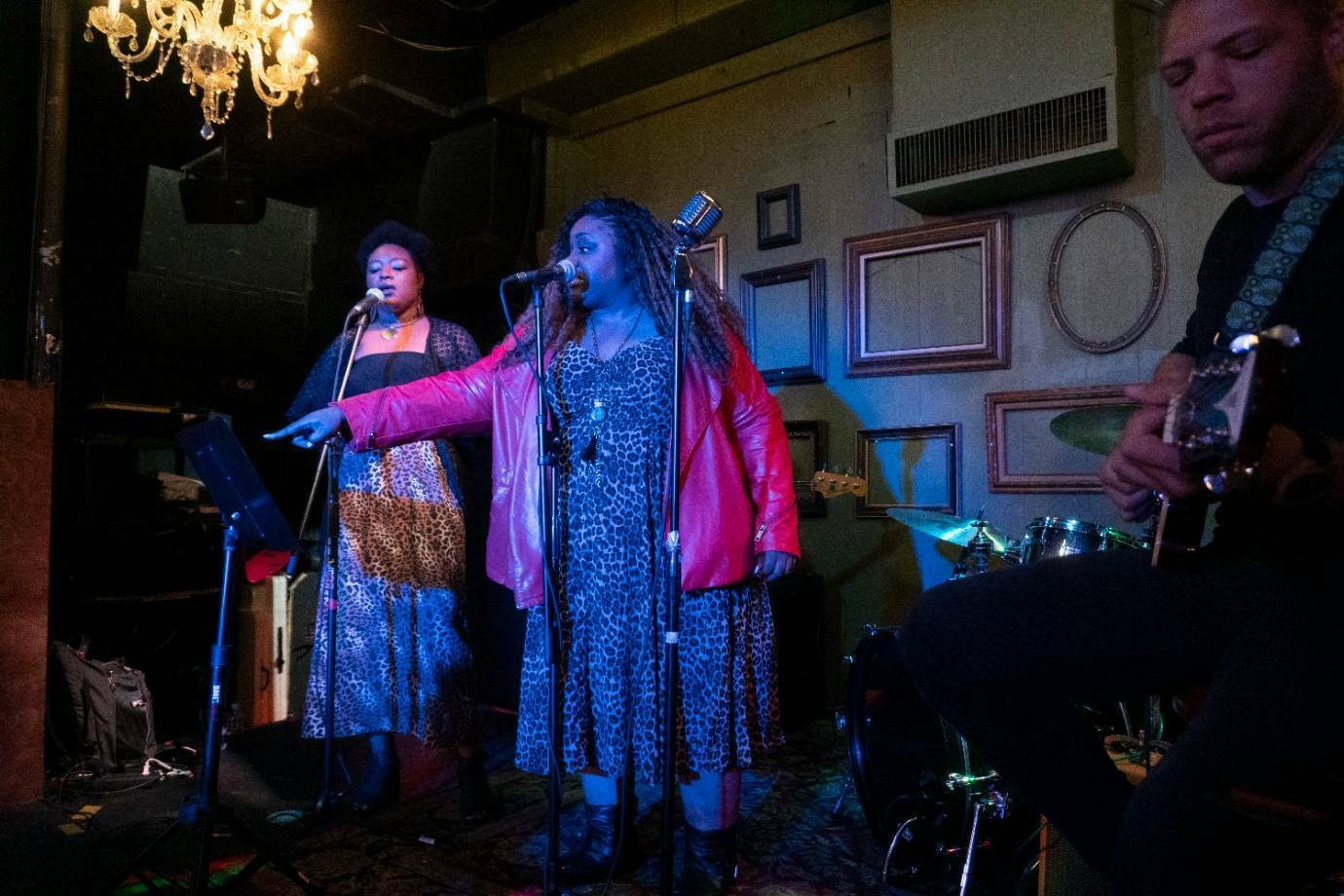n his production of film, live projections and slides, Smith bases himself on research-based methods and uses both improvisational and compositional techniques, live performance and narrative voice, in works that in this way have affinities with both theater and visual art. Cauleen Smith is aptly characterized by art historian Romi N. Crawford as a “builder of Black Cinema”. She combines film with music and poetry; forms of expression with long traditions in black culture. Music is a particularly prominent element throughout the artistry, and functions as both a structural and thematic framework. Her view of improvisation as a knowledge-based skill is in line with a number of cultural expressions from Africa and the African diaspora. Smith’s methods are based on experiments carried out jointly with collaborators, without pointing to fixed recipes on how to solve or address the investigated themes – for example, racism in an anti-black world.
Smith’s latest work, The Deep West Assembly , was created especially for the exhibition. The work explores the concepts of geological time and blackness – as these often appear camouflaged or hidden in images, songs and texts by black and brown artists (based on theorists such as Suzanne Césaire and Ryan C. Clarke). With images of geological formations such as lava caves, calderas and salt domes, as well as man-made landscape formations such as ancient Choctaw burial mounds, The Deep West Assembly creates a view of the American South as a horizontal “Deep West” (a term borrowed from the poet Wanda Coleman). Smith places this cultural Deep West in the Mississippi River Delta, showing how black cultural practices are related to indigenous traditions. In the film, the actress Dionne Audain portrays several voices, and as a guide she reads a number of texts in front of the camera – including Smith’s own Volcano Manifesto (published by F Books in 2022). The exhibition also contains a new large-scale video installation in the museum’s main hall, as well as textile banners, drawings and a sculpture series consisting of large, hand-cast candles. On the second floor, Smith has created a reading room as part of the exhibition, with a library based on a bibliography developed in collaboration with the Oslo-based artist Ayesha Jordan.
During her studies at San Francisco State University, Smith was introduced to black feminism, activist filmmaking and avant-garde film movements such as the American Structural film tradition. Later, Smith studied film at the University of California, Los Angeles. In the following decades, she concentrated on film and exhibition production, resulting in more than 30 films that have been screened internationally, in museums, galleries and film festivals. Smith’s work has been presented at institutions such as the Los Angeles County Museum of Art (2021), Contemporary Arts Museum Houston (2021), the Whitney Museum of American Art, (2020–21) and The Art Institute of Chicago (2018), as well as purchased to public art collections such as The Art Institute of Chicago, Los Angeles County Museum of Art, Museum of Contemporary Art, San Francisco Museum of Modern Art, Smithsonian American Art Museum, Studio Museum in Harlem, the Whitney Museum of American Art, Stedelijk Museum Amsterdam and Tate Modern.
Astrup Fearnley Museum and Cinematheque
As part of the exhibition, a program of Smith’s films will be shown, for the first time at a cinema in Norway, in collaboration with the Cinematheque. The program includes Smith’s first feature film, Drylongso (1998), as well as a selection of Smith’s short films and videos.




